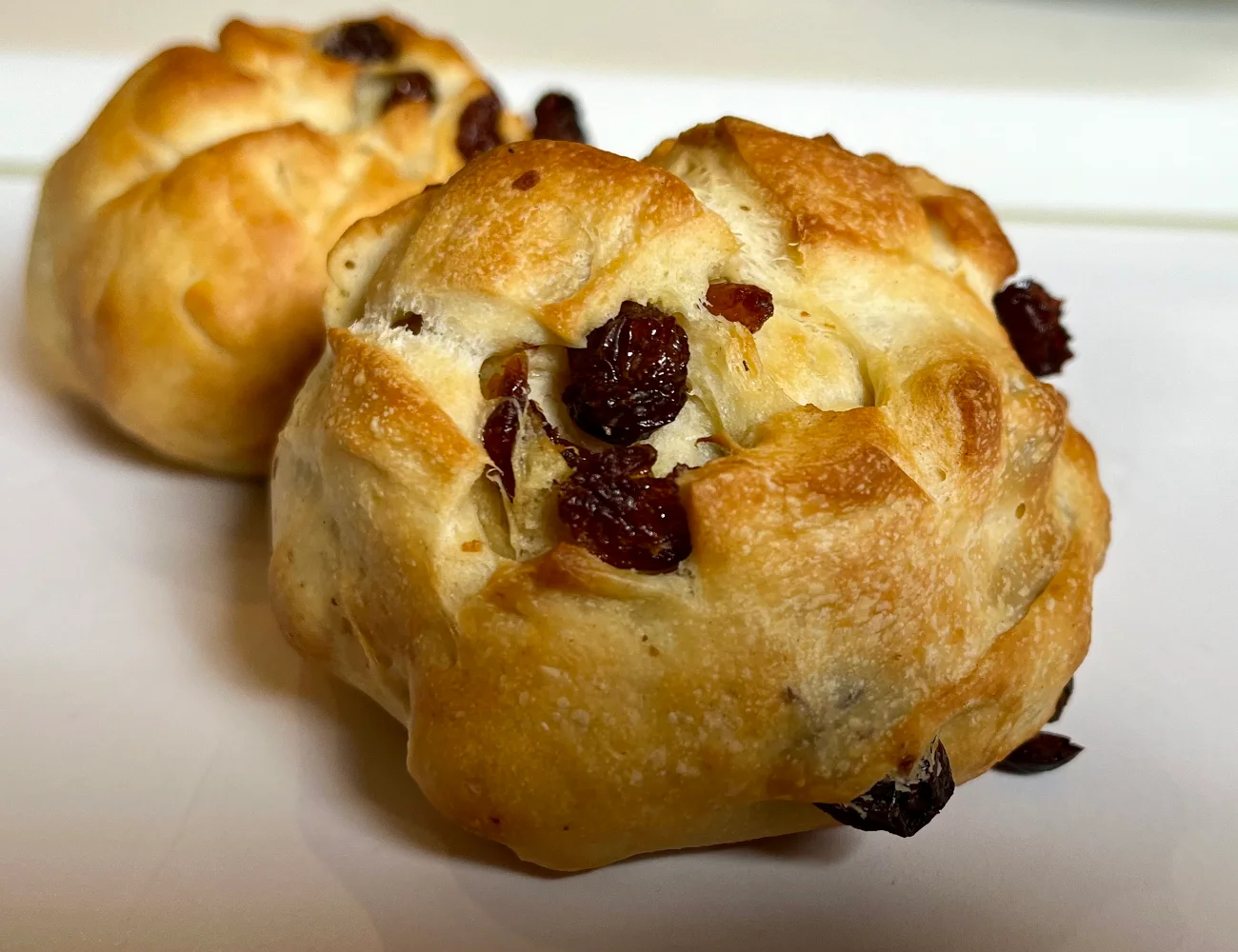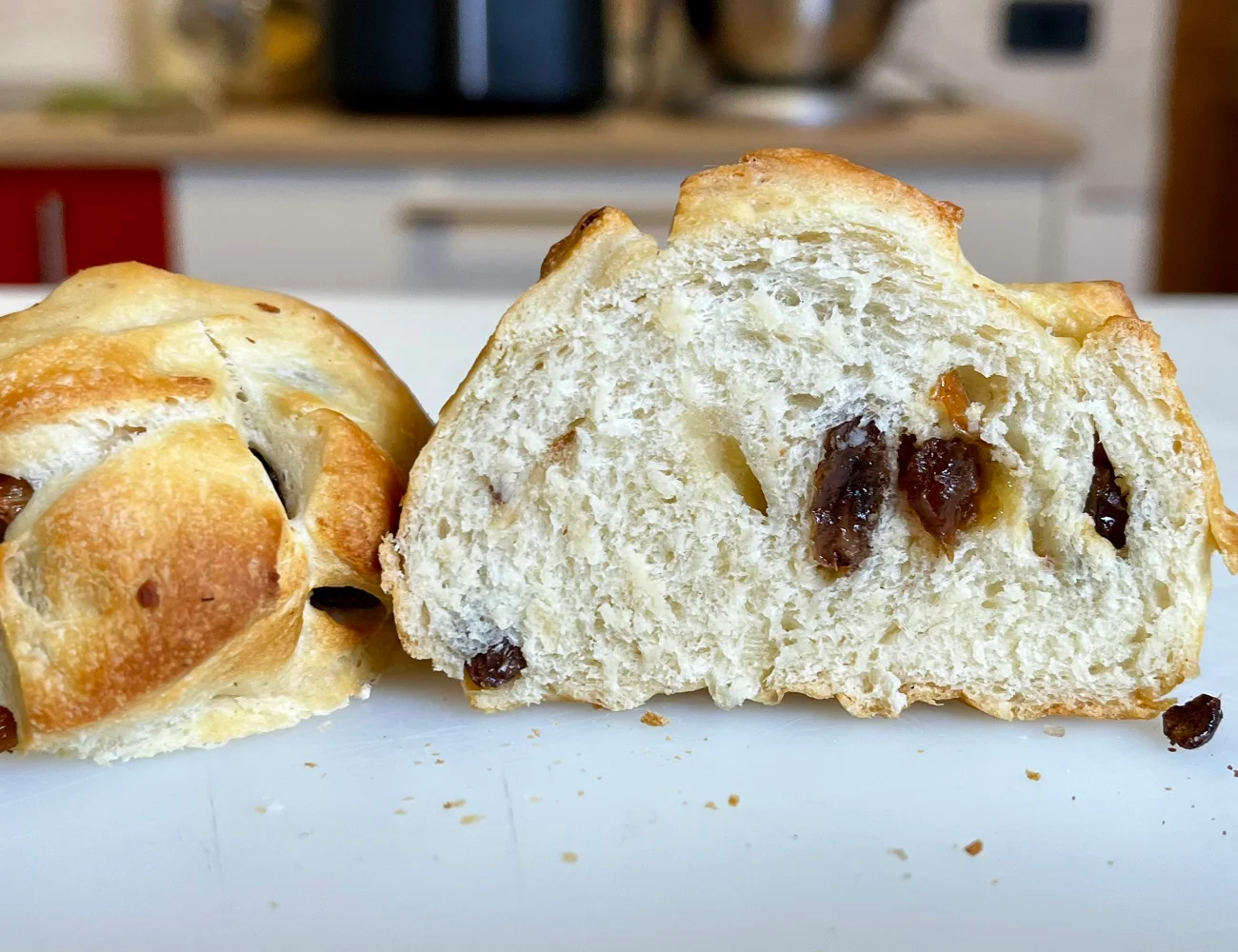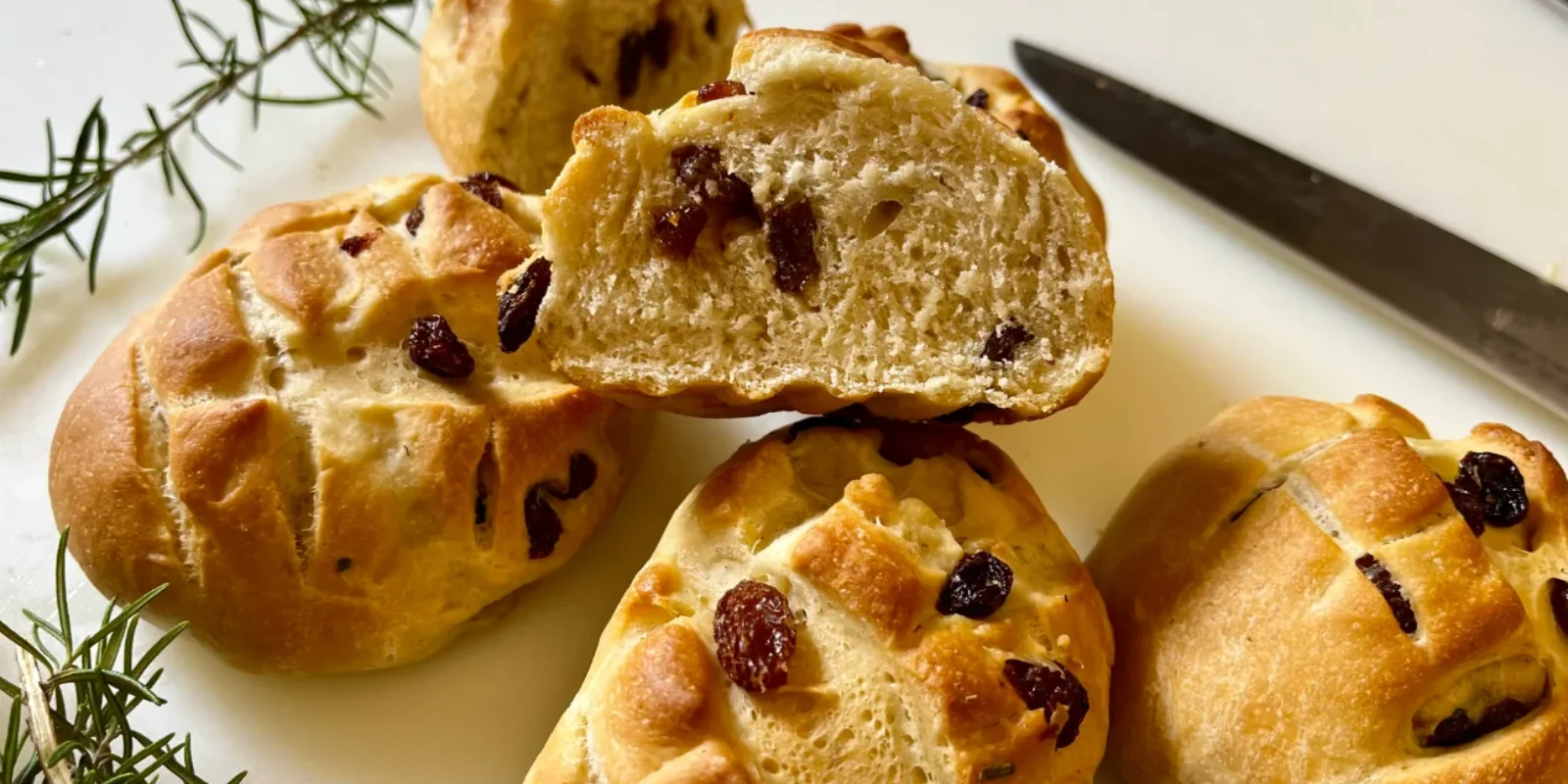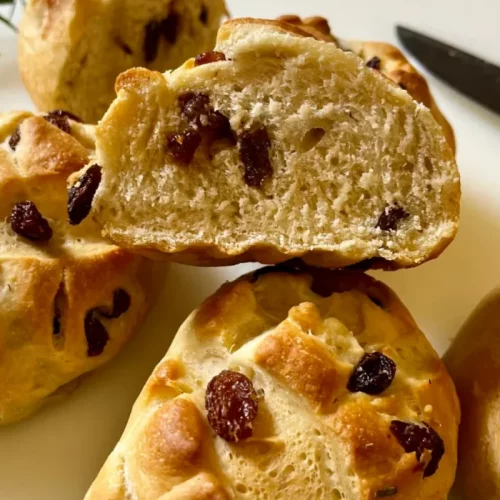Pan di Ramerino is an Italian Easter bread recipe traditional to the city of Florence in Italy. It’s origins seem to begin in the Middle Ages. Once upon a time it was primarily an easter dessert, served in Florentine bakeries mainly on Holy Thursday. However, these days, this bread is available many time of the year.
Why We Love This Italian Bread from Florence
The word ‘ramerino’ in this Italian Easter bread refers to rosemary, which is infused into the olive oil incorporated in and brushed on top of the tiny buns before baking. It’s a very mildly sweet bread, with notes of earthy rosemary and also bites of sweet raisins, which are frequently soaked in wine before being added to the dough. Before being baked, the buns are scored lightly with criss-crosses, perhaps also a nod to their reputation as an Easter bread.
Many don’t realize it, but rosemary is actually very abundant in Italy where it grows the size of hedges. We have a huge amount of fresh rosemary growing outside our home in Italy, and we just love finding new authentically Italian recipe to use with this amazing ingredient. The combination of raisins (specifically ‘sultanas’ or what are often called ‘golden raisins’) and rosemary are inspired here.
How to Make Italian Easter Bread
Soak the raisins in warm water or sweet wine for about 30 minutes. This will soften them up and make them tastier in the bread.
Add olive oil to a small pot along with about 4 sprigs of rosemary. We recommend removing the rosemary from the branches and crushing them a bit (as you should do with any herb) to help release its oils. Sauté the rosemary in the oil over low heat for about 3 minutes, infusing the oil with the rosemary. Remove it from the heat to cool, but leave the rosemary in the oil to continue the infusion. Strain out the rosemary before adding the oil to the bread dough.
Then, add yeast (dry instant) and sugar to warm milk and water. Let the yeast proof in the liquid for a few minutes. Then add the mix to bread flour, along with the cooled infused olive oil. Knead the dough for 8 -10 minutes, adding salt at the end. Knead in the raisins at the end. The final dough should be dense but soft. It should not stick to your hands.
Cover the dough and let it rise for about 2 hours until double in size.
Form the bread dough into ovals of 80 g each—about the size of a small fist. Proof the little dough balls (covered) for another hour.
Lightly score the tops of the dough balls with a few criss-crosses. Brush on rosemary-infused oil. Then bake the bread in a pre-heated 350° F (180 ° C) oven for about 25 minutes. Buon appetito!


Italian Easter Bread: Tips
Can you bake this bread in an Air Fryer?
Absolutely! In fact, small buns like these are the perfect air fryer recipe. This was one of the first baking recipes we tried with our Cosori Air Fryer and they turned out identical to those we baked in the oven. Here’s how we used our Cosori Air Fryer for this recipe:
- Proofing: We used the proofing setting for both the first and second dough proofs. Be sure to remove the crisper plate and cover the dough with plastic wrap to avoid a crust forming.
- Bake: We followed the bread baking recommendations in the booklet, baking our bread at 165° C. It took 10-15 minutes to finish the bake.
Bun recipes like this Italian Easter bread are great for the air fryer because the dough is not sensitive to the fan, unlike muffins. (See our air fryer muffin experiment). The buns remain short, therefore don’t risk rising too close to the upper heating element of the air fryer.
More Italian Dessert Recipes
Italian Easter Bread: Tuscan Pan di Ramerino Recipe
Equipment
- stand mixer optional, but helps with mixing and kneading
Ingredients
- 700 g bread flour
- 60 g brown sugar
- 125 ml milk
- 125 ml water
- 6 g dry instant yeast
- 8 g salt
- 100 ml olive oil
- 4 sprigs rosemary
- 160 g sultanas (golden raisins)
OPTIONAL
- as needed vin santo or another sweet wine to soak raisins instead of water
Instructions
Prepare Ingredients
- Soak the raisins in warm water or sweet wine for about 30 minutes. This will soften them up and make them tastier in the bread.160 g sultanas (golden raisins), as needed vin santo
- Add olive oil to a small pot along with about 4 sprigs of rosemary. We recommend removing the rosemary from the branches and crushing them a bit (as you should do with any herb) to help release its oils. Sauté the rosemary in the oil over low heat for about 3 minutes, infusing the oil with the rosemary. Remove it from the heat to cool, but leave the rosemary in the oil to continue the infusion. Strain out the rosemary before adding the oil to the bread dough.100 ml olive oil, 4 sprigs rosemary
Make the Dough
- Add yeast (dry instant) and sugar to warm milk and water. Let the yeast proof in the liquid for a few minutes.125 ml milk, 125 ml water, 6 g dry instant yeast, 60 g brown sugar
- Then add the mix to bread flour, along with the cooled infused olive oil.700 g bread flour
- Knead the dough for 8 -10 minutes, adding salt at the end. Knead in the raisins when the knead is finished. The final dough should be dense but soft. It should not stick to your hands.8 g salt
1st Proof
- Cover the dough and let it rise for about 2 hours until double in size.
Shape the Dough into Buns
- Form the bread dough into ovals of 80 g each—about the size of a small fist. Proof the little dough balls (covered) for another hour.
Bake the Italian Easter Bread
- Lightly score the tops of the dough balls with a few criss-crosses. Brush on rosemary-infused oil.
- Then bake the bread in a pre-heated 350° F (180 ° C) oven for about 25 minutes. Buon appetito!
🇬🇧 This is the English-language version of our original Italian recipe on PIATTO Ricette.

